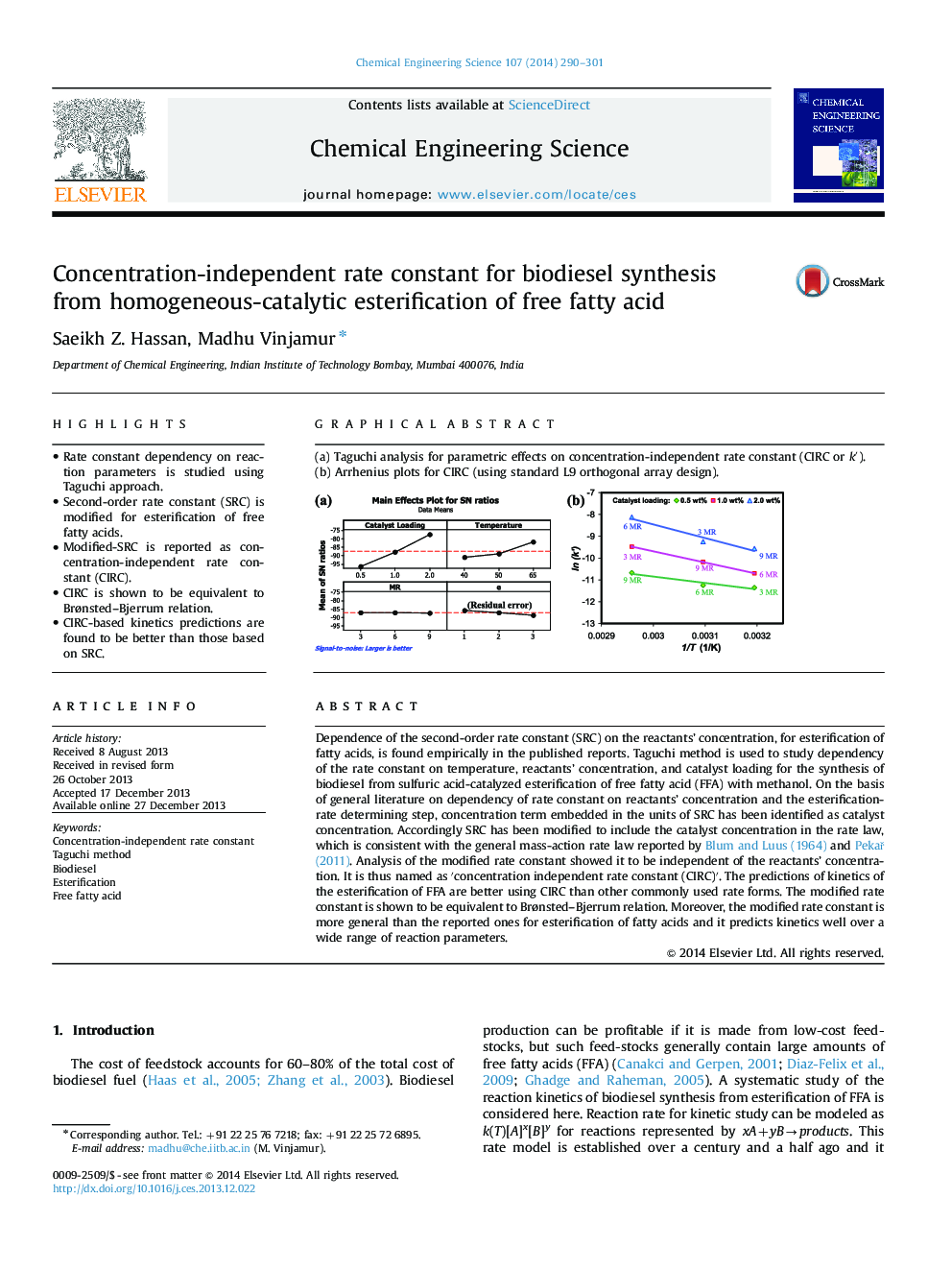| Article ID | Journal | Published Year | Pages | File Type |
|---|---|---|---|---|
| 154965 | Chemical Engineering Science | 2014 | 12 Pages |
•Rate constant dependency on reaction parameters is studied using Taguchi approach.•Second-order rate constant (SRC) is modified for esterification of free fatty acids.•Modified-SRC is reported as concentration-independent rate constant (CIRC).•CIRC is shown to be equivalent to Brønsted–Bjerrum relation.•CIRC-based kinetics predictions are found to be better than those based on SRC.
Dependence of the second-order rate constant (SRC) on the reactants’ concentration, for esterification of fatty acids, is found empirically in the published reports. Taguchi method is used to study dependency of the rate constant on temperature, reactants’ concentration, and catalyst loading for the synthesis of biodiesel from sulfuric acid-catalyzed esterification of free fatty acid (FFA) with methanol. On the basis of general literature on dependency of rate constant on reactants’ concentration and the esterification-rate determining step, concentration term embedded in the units of SRC has been identified as catalyst concentration. Accordingly SRC has been modified to include the catalyst concentration in the rate law, which is consistent with the general mass-action rate law reported by Blum and Luus (1964) and Pekař (2011). Analysis of the modified rate constant showed it to be independent of the reactants’ concentration. It is thus named as 'concentration independent rate constant (CIRC)'. The predictions of kinetics of the esterification of FFA are better using CIRC than other commonly used rate forms. The modified rate constant is shown to be equivalent to Brønsted–Bjerrum relation. Moreover, the modified rate constant is more general than the reported ones for esterification of fatty acids and it predicts kinetics well over a wide range of reaction parameters.
Graphical abstract(a) Taguchi analysis for parametric effects on concentration-independent rate constant (CIRC or k').(b) Arrhenius plots for CIRC (using standard L9 orthogonal array design).Figure optionsDownload full-size imageDownload high-quality image (212 K)Download as PowerPoint slide
